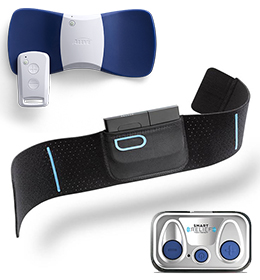Transcutaneous electrical nerve stimulation (TENS) technology has existed for over 50 years, but such devices have only been in the consumer marketplace since 2006-2007. Today, over 500 manufacturers of TENS products are registered with the FDA, and this number continues to increase. Innovation, convenience, and the ease of use of TENS devices, coupled with consumers’ increasing demand for non-drug options to prevent and alleviate pain, have helped boost sales of such devices.
The introduction of Sanofi’s Icy Hot TENS device in November 2014 had a big impact on this market segment, resulting in a 15% sales increase. Backed by an intensive marketing campaign, wide retail distribution through drug store chains and mass retailers, and a moderate price point of about $40.00-$50.00, this game-changer device helped increase Sanofi’s sales by more than 20%, as well as taking the leading spot in the at-home TENS devices market in the United States.
The revived interest in TENS technology to treat pain is also bringing in new market entrants, such as Bayer’s Aleve Direct Therapy TENS device for lower back pain, which was launched in May 2016, and NeuroMetrix’s Quell TENS device for chronic pain, introduced in June 2015. The launch of the Quell unit created a lot of buzz in the at-home TENS devices market, receiving several awards from technology associations and quickly gaining acceptance by medical professionals. This revolutionary device uses an accelerometer to determine user’s motion and therefore adjusts electronic impulses to not disturb sleep. Since the product’s debut, NeuroMetrix shipped more than 14,000 devices, generating exceptional sales growth of 400%.
As consumers are increasingly demanding more features from these devices, such as being lightweight, easy-to-wear, portable, and most importantly affordable, this segment is expected to continue to thrive and is likely to have a stronger impact on traditional OTC pain relief medications, which have experienced growth rates in low single digits over the last few years.
In the meantime, other devices for use at home that help prevent or treat minor ailments, such as allergies, itch, cold sores, hair loss, headache, or insomnia, are also making their way into this rapidly growing scene of at-home medical devices. According to our Beauty Devices: Global Market Analysis and Opportunities report, the hair regrowth devices category is booming in the United States, increasing by over 20% in 2015. Market leader HairMax accounts for the lion’s share of the category due to proven efficacy and constant innovation to bring consumers the latest technologically advancements. In the allergy category, Wholesale Medical Network has recently introduced Bionette, a compact device that uses light technology inserted into the nostrils to deliver drug-free relief from nasal allergy symptoms.
While the self-care devices market is still in the nascent stage, it will be interesting to see how it evolves in the following years. Driven by constant technological advancements, this market has great potential to become consumers’ next top alternative to traditional nonprescription drugs.
In our Pain Management Devices: Global Market Analysis and Opportunities and Self-care Devices: U.S. Market Analysis and Opportunities reports, we take a deep look into the vibrant world of at-home devices. These reports will help marketers address challenging matters, such as competition, leading technologies, key trends and drivers, consumers’ receptivity, sales figures, and, most importantly, the devices impact on traditional OTC categories. In-depth profiles of the leading brands will also be provided.
Written by Marcela Chifu, Marketing Executive Kline

